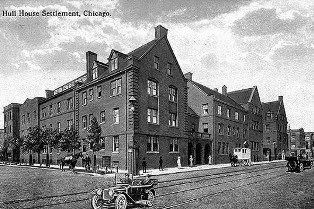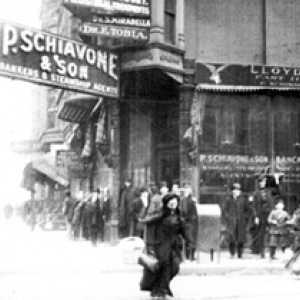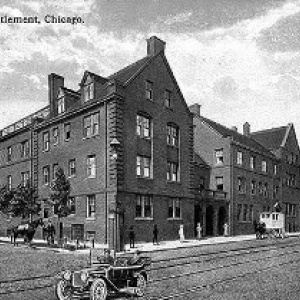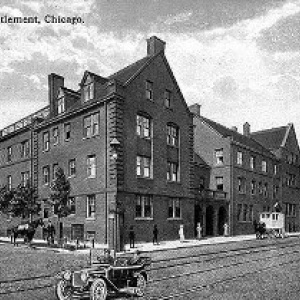
WTI Magazine #19 2014 Feb, 28
Author : Vincent Romano Translation by:
Taylor Street lies in the shadows of Chicago's Loop. At the turn of the 20th century, a band of tribes from southern Italy (Campania/Napoli, Sicillia/Palermo, Apuglia/Bari, Calabria/Reggio, Bassilicata, Molise, Abruzzi, ...) immigrated to this country. They settled in Chicago's Taylor Street neighborhood, which later came to be known as Little Italy, the core of Jane Addams' Hull House Neighborhood.
Those early inhabitants of Taylor Street, our immigrant parents, sought, for themselves and their offspring, a new and better life. Centuries earlier, other Italians had also crossed the great ocean to the Americas. Those 15th century Italians were the discoverers and the explorers who first mapped and ultimately named this great country.
Our parents carried within them, on those ships embarking from their Italian ports, a precious cargo:–a gene pool that sprang from the loins of the Caesars and the Michaelangelos. Yes, these immigrants, our parents, were the descendants of a noble people who, for a millennium, had nurtured, defended and ultimately passed on all that had come to be known as Western Civilization.
It is important that we preserve the memory of those original immigrants who made this fateful journey and settled into Chicago's Little Italy. It is equally important that we preserve the memories of their first generation offspring; those who were born and raised in this subculture called Little Italy. The story of our people's successes and our people's failures cannot be fully appreciated without the knowledge and understanding of the subculture that had been created for those immigrants and their offspring by the major society into which they were cast.
Those first generation Italian-Americans, nurtured through the Great Depression and the Great War by their immigrant parents, reshaped and redefined that subculture–enabling future generations of Italian-Americans to claim their share of the American dream and eventually earn a place in the executive suites of corporate America.
We will leave it for future generations to examine and explain that subculture that had evolved for us. For now we will simply attempt to describe it. Much of that subculture was ordained for us by the larger society via the media; e.g., movies, radio, television, etc. We will leave it for a future generation to examine and explain why Allistair Cooke, in a major TV presentation called, "America: The Immigrant," selected Alphonse Capone as representative of the contributions made by the Italian immigrant; and why the likes of an Enrico Fermi were not selected as representative of the contributions made by our people.
Pressing further, they may even demand an explanation as to why George "Bugs" Moran, the Gusenberg brothers, Meyer Lansky, Dion O'Banion, the Leopold and Loeb's, Llewellyn Murray "the camel" Humphreys, John "Jake" Guzik, and a host of other notable and nefarious characters were not pulled from the Immigration Files in Washington D. C., by Alistar Cooke, as being representative of the contributions made by their ethnic groups.
We will leave it for another time and another place to explain the impact this form of psychological genocide had upon the residents of our Little Italy and all of the Little Italies throughout America; another time and another place to explain how the media had programmed the larger society to think of us as a people; encouraging many Italian-Americans, refusing to remain servants to the American Dream, to castrate the vowel from the end of their names in order to become participants in that Dream. We will leave these and other issues for our children and the fullness of time to address.
We will also leave it for a future generation to document the journey of the survivors (the children) of this media induced plague. Psychological holocaust is a label more frequently used by those astute in the development of human behavior.
For now, let us memorialize this phenomenon of a generation and a people who excelled in virtually everything that the larger society had ordained for them—from digging sewers to enterprises in which only the most talented and courageous could excel. For now, let us simply capture, for posterity, the building matter of a "Once Upon a Time" trilogy—a trilogy that must eventually culminate with our children, our posterity, gaining admittance to and excelling in the executive suites. For now, let us capture, for posterity, a place...a time...and its people! Questa è cosa nostra!







